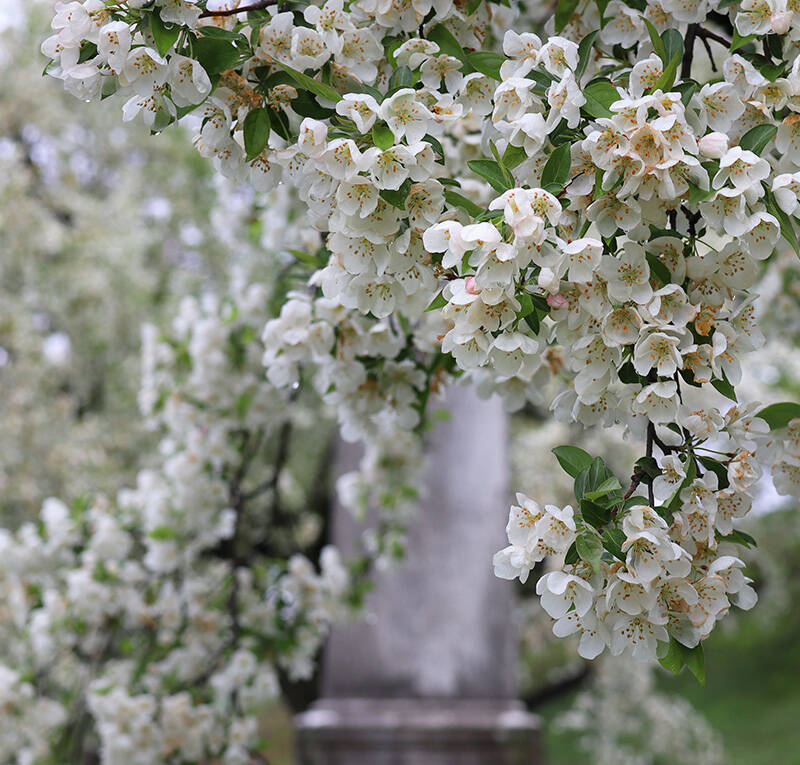In many yards, you’ll find flower beds and a veggie patch and never the twain shall meet. However, many edible plants also make handsome additions to your garden. Case in point: Harry Holding’s The School Food Matters Garden at this year’s Chelsea Flower Show, which was composed entirely of edible plants. In Holding’s thinking, Why should we keep perennials separate in the traditional long border and confine edible plants to a kitchen garden or allotment? The resulting edible garden was much more like a flower garden than a raised bed with rows of tomatoes. These “edimental” (a portmanteau of edible and ornamental) plants popped up in several other gardens at Chelsea, including U.K. garden designer and writer Manoj Malde’s design that included pineapple, guava, fennel, oregano, thyme, and cardoons. Clearly, edible plants are having their moment in formal gardens.
The pretty-but-edible category of plants is vast, and many edible plants are already used decoratively–think of herbs like sage, rosemary, and thyme; likewise, fruit trees and shrubs have long been planted for their ornamental quality (is there anything prettier than an espaliered pear?). But garden designers are getting more creative about what edible plants can be used outside the vegetable patch and how they use them. Many of these plants also happen to be perennial, meaning they’re more low-maintenance than the typical annual vegetables, which are both time-consuming and water-intensive.
We asked four garden designers with a knack for weaving edimentals into their designs to share their favorite but less expected ornamental edibles. Here are their picks:
Artichoke (Cynara cardunculus)

“I love using artichokes in the landscape,” says Lauri Kranz, founder of Edible Gardens LA. “They make a strong statement with their bursts of spring fruit, which if left unharvested, turn into magnificent summer flowers.” Manoj, who also loves artichokes, recommends planting them in the back of a border as they grow to five feet (1.5 meters) tall. According to Kranz, this perennial becomes more productive and beautiful with each passing year. Also: The bees love them.
Chive (Allium schoenoprasum)

Perennial herbs are among the most common edimentals you’ll find sprinkled into the flower garden, but chives are a stand-out for Holding. “The well-loved herb is one of our favorites for bringing color drifts to a herbaceous border,” says Holdings. “It’s a reliable, delicious, and beautiful plant that deserves its place in all edimental planting schemes.”
Fava Bean (Vicia faba)

“Fava beans are another favorite vegetable to grow because not only are they delicious and packed with protein, they are beautiful in the garden,” says Kranz. “Tall and elegant plants with delicate flowers that turn into fava bean pods, these make a beautiful addition to any garden.”
King’s Spear (Asphodeline lutea)

“Prized in ancient Greek times and little known today, King’s Spear is one of our favorite and least appreciated edimentals,” says Holding, who notes that the yellow-flowered perennial is entirely edible, including the nutty-flavored roots, which were once considered a delicacy.
Parsnip (Pastinaca sativa)

Malde likes to allow this root vegetable to bolt and grow into plants in the garden, and he even included some in his Chelsea Flower Show garden this year. “Parsnips grow very upright and tall, looking statuesque. On top of the tall stems you get the most beautiful yellow umbellifers,” says Malde. His advice is to position them in groups of three, five or seven, through your planting scheme. (See Gardening 101: Parsnip.)
Love-in-a-Mist (Nigella damascene ‘Miss Jekyll’)

This is an annual that needs to be grown from seed every year, but Malde says it is well worth the effort. “Love-in-a-Mist has delicate, wispy looking foliage, and the upright stems produce beautiful sky-blue flowers—and there are other varieties that bloom in white and pinks.” The plant also produces unusual, whimsical seed pods that provide interest after the blossoms fade—and edible seeds, also known as black sesame, black cumin, or onion seeds, which have a smokey taste reminiscent of the flavors its alternate names suggest.
‘Scarlet Sentinel’ Apple (Malus domestica)

“This is one of our favorite backyard apple trees because it stays in a lovely columnar shape as well as grows delicious sweet-tart apples,” says Lonna Lopez, a garden designer at Pine House Edible Gardens, a firm located in the Bay Area. “It can be used in a formal design, especially with a second one, which you’ll need for pollination. It also looks great in more casual garden designs where it can be used in a group or as a stand alone specimen.” Columnar apples like Scarlet Sentinel produce fruit on spurs along the main stem. With their narrow, upright shape and maximum height of about ten feet, they’re ideal for small spaces, including city gardens—they can even be grown in a container. Lopez recommends planting your Scarlet Sentinel with a Golden Sentinel for pollination and a variety of apples.
Banana plant ‘Ice Cream’ (Musa acuminata ‘Blue Java’)

“Ice Cream banana is our favorite edible banana to grow in the Bay Area. Not only is the large leaf shape helpful in the garden design to break up finer textures, the Ice Cream banana is very productive and delicious,” says Lopez. Note that this plant prefers mild weather and will grow in zones 9 or 10.
For more ornamental edibles, see:
- Yucca: A Resilient Garden Plant and a Delicious Vegetable
- Gardening 101: Dill
- Lablab—An Ancient Crop and Stunning Vine












Have a Question or Comment About This Post?
Join the conversation (0)